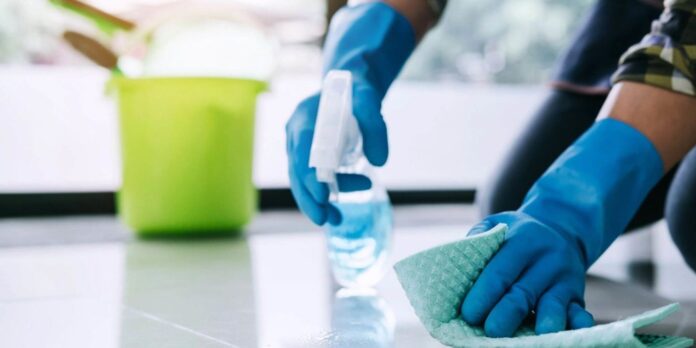If you’ve ever read the labels on your home cleaning products, chances are that you came across bleach, especially in the bathroom cleaning products. And there’s a good reason we use it – bleach is great at cleaning things and killing bacteria. Sadly, it is not so good for our health or environment.
This is why green cleaning options exist and why people have been trying to phase bleach out. However, most of us are not aware of this and simply don’t know enough. For this reason, we reached out to green cleaning pros at Eco Mama to give us the breakdown on why bleach is not good, and what alternatives are out there.
Why Is Bleach So Bad?
Bleach, or sodium hypochlorite, as is its chemical name, is a volatile chemical that we have been using for over two centuries as a cleaning agent. The main reason why we started using this chemical in our homes is due to its bleaching (whitening) abilities. It was used to whiten clothes.
Over time, we discovered its disinfecting abilities as well, so it started being used as a household cleaner too. However, despite its numerous benefits, this chemical is still volatile and produces chlorine as it dissolves.
Chlorine gas is a toxic chemical used as a chemical weapon in World War I and is extremely harmful to our lungs and skin if we’re exposed to it. Additionally, if chlorine is released into the waterways, it can form hydrochloric acid – one of the strongest and most harmful non-organic acids.
Fortunately, there are plenty of chemicals that we can use for cleaning that are not as impactful on the environment as well as our own health.
Sodium Bicarbonate
Even though we just demonized a sodium compound for its adverse effects on the environment and our health, it is undeniable that sodium and its salts are great washing and bleaching agents. This is why there is another sodium-based cleaning agent on this list – sodium bicarbonate.
Although, you probably know it by its household name – baking soda. Your parents or grandparents probably already know how effective baking soda is at cleaning. It used to be used for whitening anything from teeth to clothes and removing soap stains from metals.
Hydrogen Peroxide
Chances are that you have hydrogen peroxide (often just called ‘peroxide’) in your home. Look at your first-aid kit. The disinfectant in there is likely a solution of hydrogen peroxide. Just like bleach, hydrogen peroxide has a number of uses and can be used as a bleaching and disinfecting agent when washing clothes. All you need to do is add a cup of it to your washing load.
Similarly, it can be used to clean and disinfect surfaces in your home. It is somewhat less effective than bleach but for most day-to-day uses, it can completely replace bleach. If you pour peroxide onto a stain, it will bubble and fizz as it dissolves the stain so it is easy to remove.
Tea Tree Oil
Tea tree oil is a type of essential oil derived from a tea tree native to Australia. The oil has a camphor-like odor and decent disinfecting capabilities. This is why it is often used as a home remedy for small cuts and mild inflammations of the skin.
For this same reason, this substance can be a reasonable choice for a general purpose surface cleaner. Keep in mind that it is not as strong as chemical cleaning solutions, so if you need something stronger don’t count on tea tree oil to clean really stubborn stains. On the upside, it does leave a pleasant smell for a long time.
Cleaning your home responsibly and sustainably is a trend that has been growing in recent years. If you’re interested in joining this movement, you can start with cleaners from this list.











